Integrating the Web into Everyday Library Services
Practical Guides for Librarians
 About the Series
About the Series
This innovative series written and edited for librarians by librarians provides authoritative, practical information and guidance on a wide spectrum of library processes and operations.
Books in the series are focused, describing practical and innovative solutions to a problem facing todays librarian and delivering step-by-step guidance for planning, creating, implementing, managing, and evaluating a wide range of services and programs.
The books are aimed at beginning and intermediate librarians needing basic instruction/guidance in a specific subject and at experienced librarians who need to gain knowledge in a new area or guidance in implementing a new program/service.
 About the Series Editor
About the Series Editor
The Practical Guides for Librarians series was conceived by and is edited by M. Sandra Wood, MLS, MBA, AHIP, FMLA, Librarian Emerita, Penn State University Libraries.
M. Sandra Wood was a librarian at the George T. Harrell Library, The Milton S. Hershey Medical Center, College of Medicine, Pennsylvania State University, Hershey, PA, for over thirty-five years, specializing in reference, educational, and database services. Ms. Wood worked for several years as a development editor for Neal-Schuman Publishers.
Ms. Wood received a MLS from Indiana University and a MBA from the University of Maryland. She is a fellow of the Medical Library Association and served as a member of MLAs Board of Directors from 1991 to 1995. Ms. Wood is founding and current editor of Medical Reference Services Quarterly , now in its thirty-fifth volume. She also was founding editor of the Journal of Consumer Health on the Internet and the Journal of Electronic Resources in Medical Libraries and served as editor/coeditor of both journals through 2011.
Titles in the Series
1. How to Teach: A Practical Guide for Librarians by Beverley E. Crane
2. Implementing an Inclusive Staffing Model for Todays Reference Services by Julia K. Nims, Paula Storm, and Robert Stevens
3. Managing Digital Audiovisual Resources: A Practical Guide for Librarians by Matthew C. Mariner
4. Outsourcing Technology: A Practical Guide for Librarians by Robin Hastings
5. Making the Library Accessible for All: A Practical Guide for Librarians by Jane Vincent
6. Discovering and Using Historical Geographical Resources on the Web: A Practical Guide for Librarians by Eva H. Dodsworth and L. W. Lalibert
7. Digitization and Digital Archiving: A Practical Guide for Librarians by Elizabeth R. Leggett
8. Makerspaces: A Practical Guide for Librarians by John J. Burke
9. Implementing Web-Scale Discovery Services: A Practical Guide for Librarians by JoLinda Thompson
10. Using iPhones and iPads: A Practical Guide for Librarians by Matthew Connolly and Tony Cosgrave
11. Usability Testing: A Practical Guide for Librarians by Rebecca Blakiston
12. Mobile Devices: A Practical Guide for Librarians by Ben Rawlins
13. Going Beyond Loaning Books to Loaning Technologies: A Practical Guide for Librarians by Janelle Sander, Lori S. Mestre, and Eric Kurt
14. Childrens Services Today: A Practical Guide for Librarians by Jeanette Larson
15. Genealogy: A Practical Guide for Librarians by Katherine Pennavaria
16. Collection Evaluation in Academic Libraries: A Practical Guide for Librarians by Karen C. Kohn
17. Creating Online Tutorials: A Practical Guide for Librarians by Hannah Gascho Rempel and Maribeth Slebodnik
18. Using Google Earth in Libraries: A Practical Guide for Librarians by Eva H. Dodsworth and Andrew Nicholson
19. Integrating the Web into Everyday Library Services: A Practical Guide for Librarians by Elizabeth R. Leggett
Integrating the Web into Everyday Library Services
A Practical Guide for Librarians
Elizabeth R. Leggett
Practical Guides for Librarians, No. 19
ROWMAN & LITTLEFIELD
Lanham Boulder New York London
Published by Rowman & Littlefield
A wholly owned subsidiary of The Rowman & Littlefield Publishing Group, Inc.
4501 Forbes Boulevard, Suite 200, Lanham, Maryland 20706
www.rowman.com
Unit A, Whitacre Mews, 26-34 Stannary Street, London SE11 4AB
Copyright 2015 by Rowman & Littlefield
All rights reserved. No part of this book may be reproduced in any form or by any electronic or mechanical means, including information storage and retrieval systems, without written permission from the publisher, except by a reviewer who may quote passages in a review.
British Library Cataloguing in Publication Information Available
Library of Congress Cataloging-in-Publication Data
Leggett, Elizabeth R., 1985
Integrating the Web into everyday library services : a practical guide for librarians / Elizabeth R. Leggett.
pages cm. (Practical guides for librarians ; no. 19)
Includes bibliographical references and index.
ISBN 978-1-4422-5674-3 (cloth : alk. paper) ISBN 978-1-4422-5675-0 (pbk. : alk. paper) ISBN 978-1-4422-5676-7 (ebook)
1. Libraries and the Internet. 2. LibrariesInformation technology. 3. Internet searching. 4. Public access computers in libraries. 5. Internet access for library users. I. Title.
Z674.75.I58L44 2015
020.285'4678dc23 2015021277
 The paper used in this publication meets the minimum requirements of American National Standard for Information SciencesPermanence of Paper for Printed Library Materials, ANSI/NISO Z39.48-1992.
The paper used in this publication meets the minimum requirements of American National Standard for Information SciencesPermanence of Paper for Printed Library Materials, ANSI/NISO Z39.48-1992.
Printed in the United States of America
Contents
Preface
The role of libraries is changing. Its no longer enough for a librarian just to be able to navigate a card catalog or to memorize the designations of the Dewey decimal system. Nor is it enough to know what books are available in your facility, because in todays information age, you may have many types of information, both material and digital. Your patrons will want and expect the variety of information that is available through modern means, and what is thought of as a traditional library is simply inadequate for many patrons. Integrating the Web into Everyday Library Services: A Practical Guide for Librarians is a guide to this type of information, the information available through the Internet.
The rise of the Internet has dramatically changed the amount, type, and variety of information that your patrons have access to, with or without using a library. The expectations of your patrons have greatly increased as well, since anyone who has spent much time online knows just how much information it is possible to access, so making do with what they can find on your shelves wont suffice.
Not only is simply being adept at traditional methods of searching inadequate for the modern patron, but also just being able to conduct simple online searches is not enough, either. Modern searching tools are so intuitive that nearly anyone can conduct online searches. Being savvy with Internet culture is not enough, either. People are and will be coming into your library who have never experienced a time without computers and the Internet, and they will feel very comfortable online. A minimal knowledge of how to use the Internet will not be sufficient to help these patrons.
Its a difficult time to be a librarian. Many people may feel that they dont need libraries, since the Internet is faster and easier than using a special facility for information. Funding for many libraries is in danger of being cut because of these beliefs.
Next page
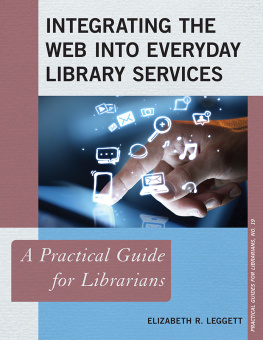
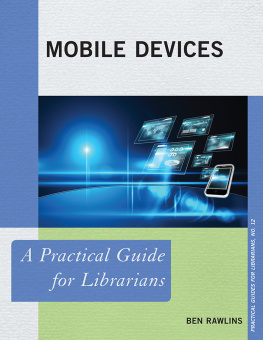
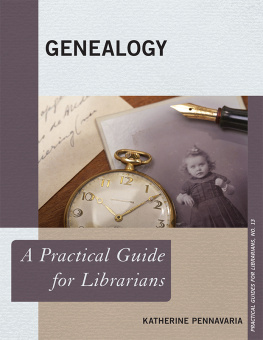
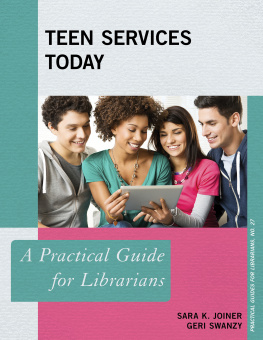

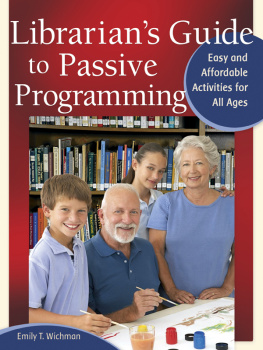

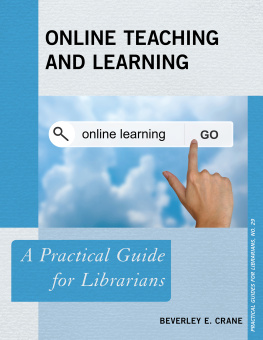
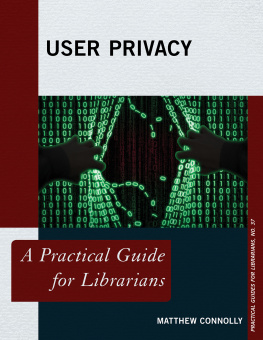

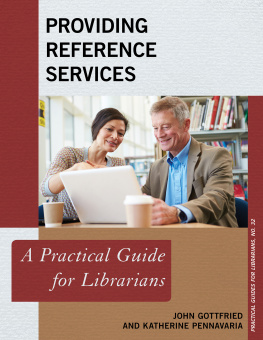
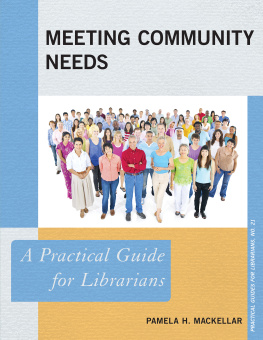

 About the Series
About the Series The paper used in this publication meets the minimum requirements of American National Standard for Information SciencesPermanence of Paper for Printed Library Materials, ANSI/NISO Z39.48-1992.
The paper used in this publication meets the minimum requirements of American National Standard for Information SciencesPermanence of Paper for Printed Library Materials, ANSI/NISO Z39.48-1992.